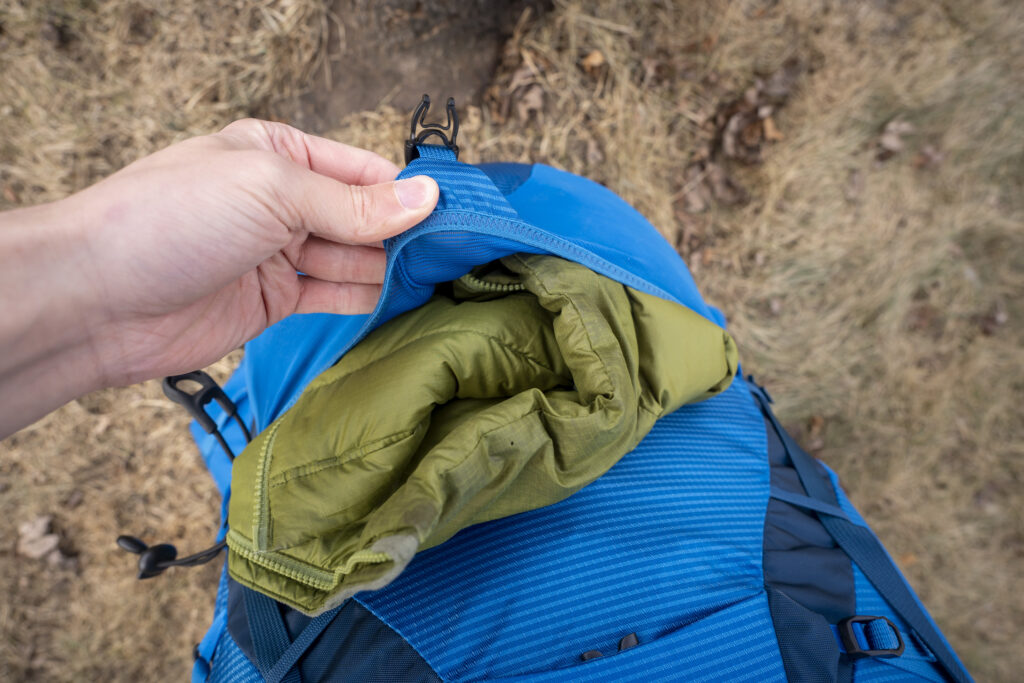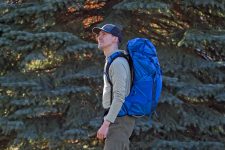
Osprey Exos 58 Backpack Review
Bottom Line
With a good balance between lightweight comfort and features, the Exos 58 continues its reign as one of the most popular packs on trail. Compared to more traditional packs, the Exos strips down a few features to achieve a lighter weight. Still, it keeps many key options that should appeal to traditionalists, too. We loved the trekking pole quick attachment system, the comfortable hip belt pockets, and especially the trampoline mesh back panel, which kept our back cool and comfortable during testing.
Compared to other backpacking backpacks, the Exos is about average in price and durability. Bolstering both metrics is the excellent Osprey warranty, which gives backpackers even more peace of mind. In the end, the Exos is a bit of a jack of all trades, appealing both to traditionalists and backpackers interested in lightening their pack weight. We think it’s a good option for thru hikers who like its feature set and weekend warriors who want something decently lightweight that will deliver a quality experience.
How We Tested
We tested the Exos during our refresh of all backpacking backpacks, conducting preliminary testing on local trails in the midwest during winter. We’ll update this review with more three season conditions as testing progresses.
Quick Specs
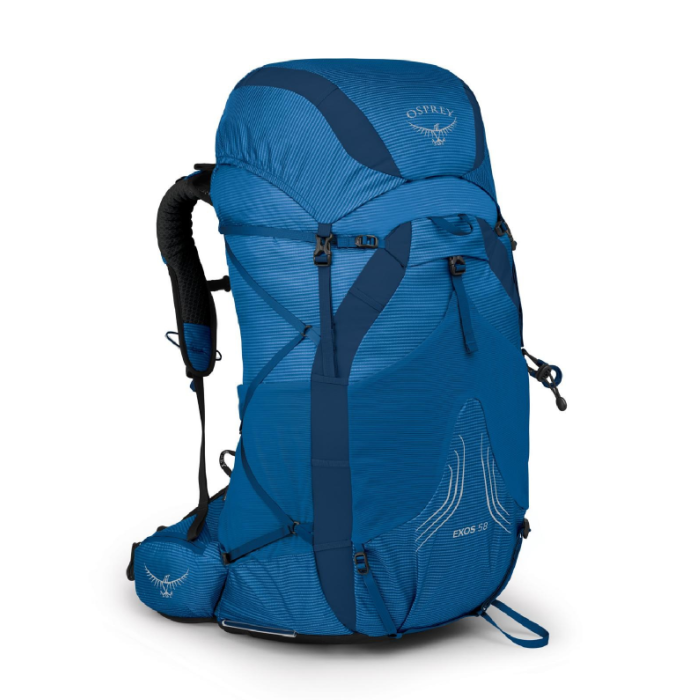
Osprey Exos 58 / Eja 58
Best Lightweight Ventilation
CleverHiker Rating:
4.4/5.0
Price:
$260
Weight:
2 lb. 13 oz.
Volume:
58 L
Max Weight Rec.:
35 lb.
Pros
- Excellent ventilation and comfort
- Good hip belt pockets
- Lightweight for a framed pack
Cons
- Shifted center of gravity makes pack feel heavier
- Frame may rub on muscles
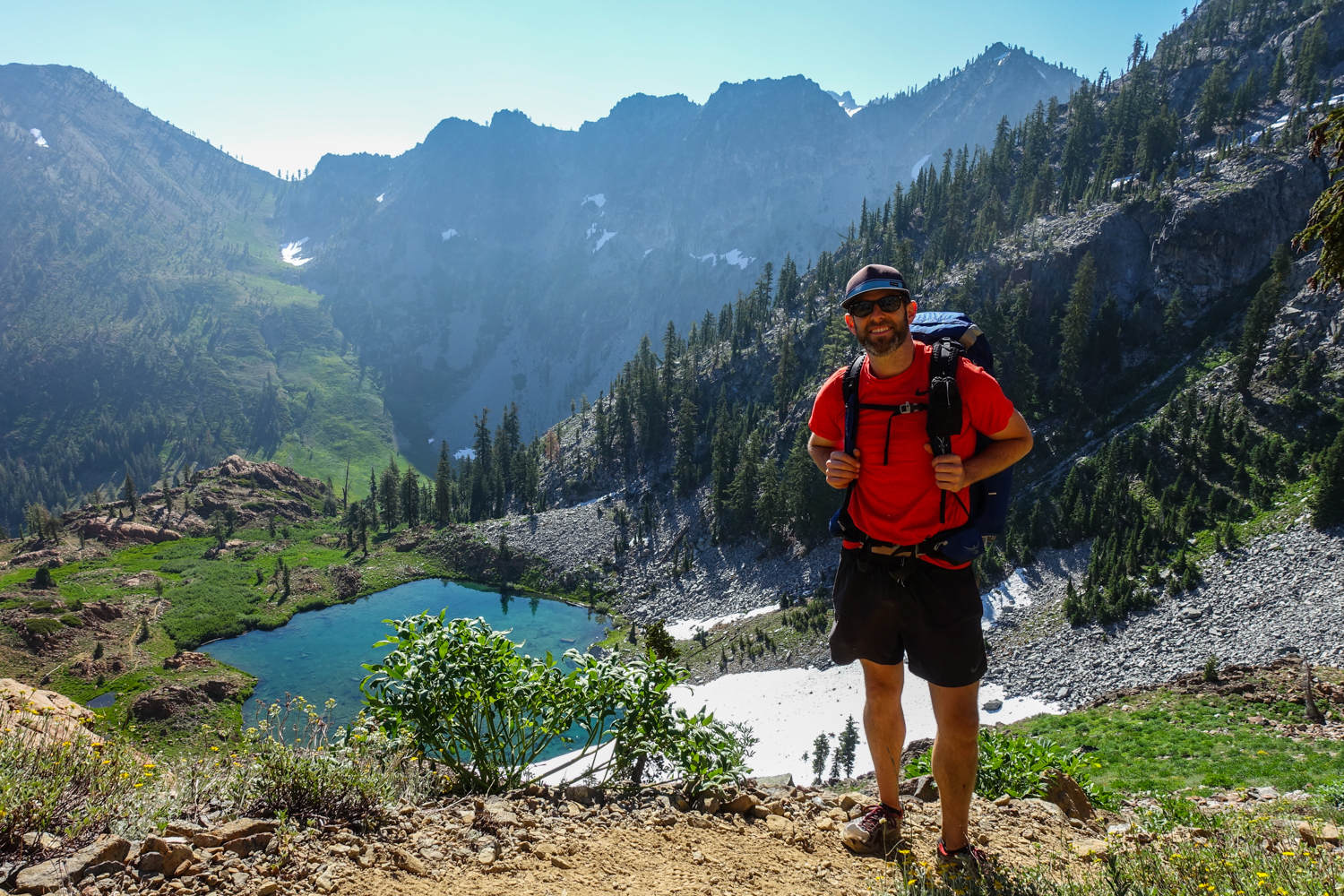
Comfort
As one of the most popular backpacks on any trail, the Osprey Exos must have something special going for it in the comfort category. We can confirm that this is a super comfortable pack. A lot of the magic here is Osprey’s suspended mesh back panel, sometimes referred to as a “trampoline” back. For most of the back area, the only part that is in contact with your body is this mesh section, which promotes excellent airflow and comfort. The downside is that it does push the pack farther away from your body. This makes the overall pack feel slightly heavier than if it were snug against your body. For most people, this tradeoff will be worth it to reduce a sweaty back.
Putting the pack on with 30 pounds of weight makes it clear this pack has invested in comfort. The suspended mesh panel does a great job hugging the body and keeping things comfortable. Like a lot of Osprey packs, the solid hip belt gives a sense of security when scrambling over rocks or uneven terrain.
One thing we will note from our experience with previous versions of the Exos is gluteal comfort. The frame extends close to the top of the glute muscle, and over repeated days of wearing the pack, we noticed persistent pain begin to develop at the top of these muscles from contact with the frame. Your body changes over the course of a hike, feet swell, and muscles can as well. Our glute eventually began to contact the frame more and more as the days went on. We had a second person with this same issue after additional days of testing.
Note that this is not a specific issue with the Exos, it’s a call-out that when fitting backpacks, be aware that any part of your body that comes close to contact with the frame might be a potential pain point. Other people using the Exos don’t report this issue. It’s just a reminder that everyone’s body is different and a pack is a very personal comfort choice.
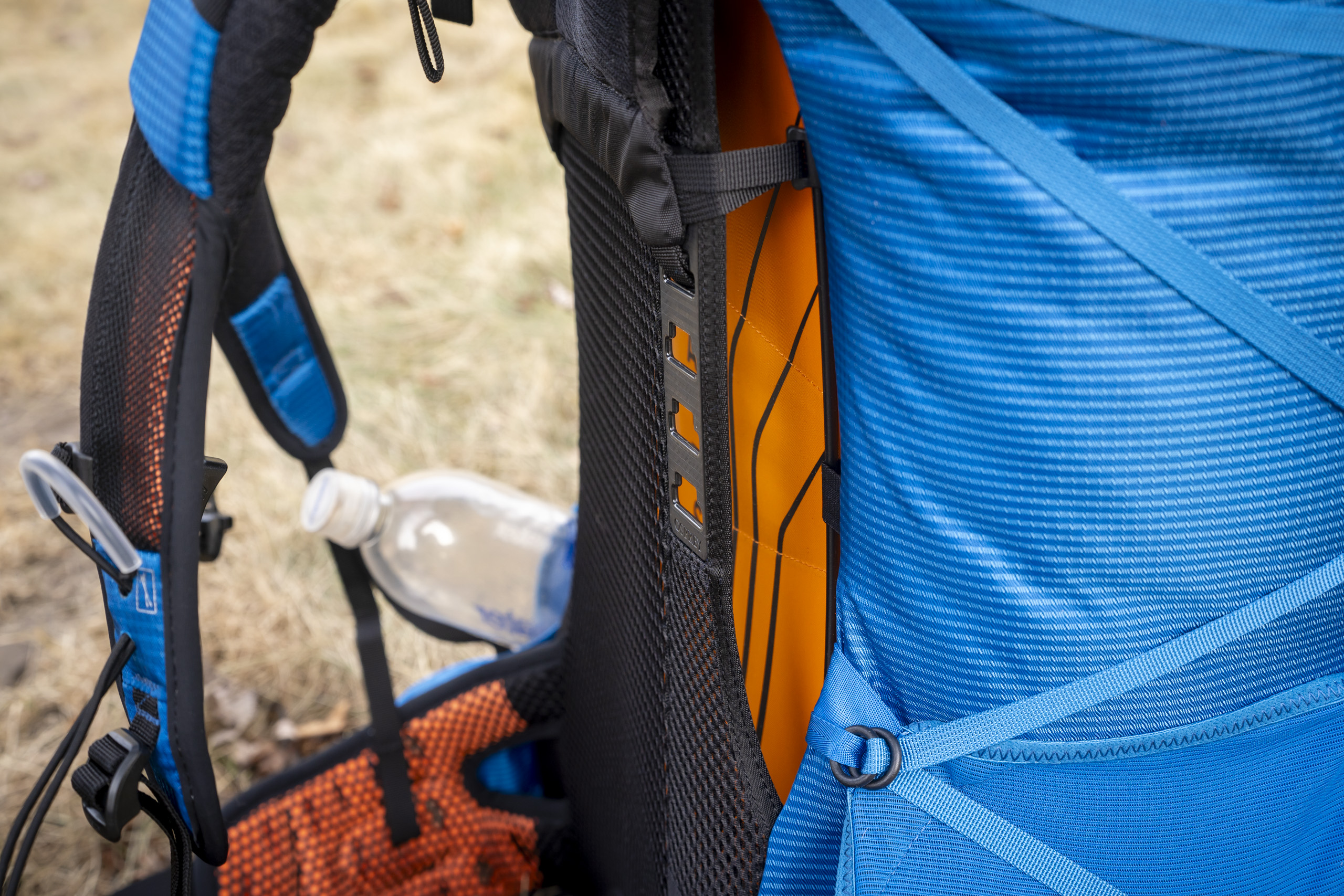
Features
With a lighter weight than many traditional packs, the Exos makes a few sacrifices in features. Still, it manages to cram in an impressive amount. Making a triumphant return is the presence of hipbelt pockets, which the second generation of this pack had removed. We’re glad to see them back and better than ever – with smooth zippers, durable face fabric (as opposed to mesh, and a decent size. We generally keep our phone, sunscreen, earbuds case, and snacks in our pockets for quick use throughout the day and found these to hold everything we need easily. They’re not the largest we’ve seen but big enough that we’re not complaining.
Another feature we love is the integrated trekking pole quick attachment system on the left shoulder strap. It’s a system good enough that we emulate it on other packs using some shock cord. When we’re crushing miles but need a snack, using this system frees our hands to open a package of pop tarts. The dual opening water bottle pockets are also a favorite feature on the Exos. This second vertical opening on the water bottle pocket allows for easier access to water bottles.
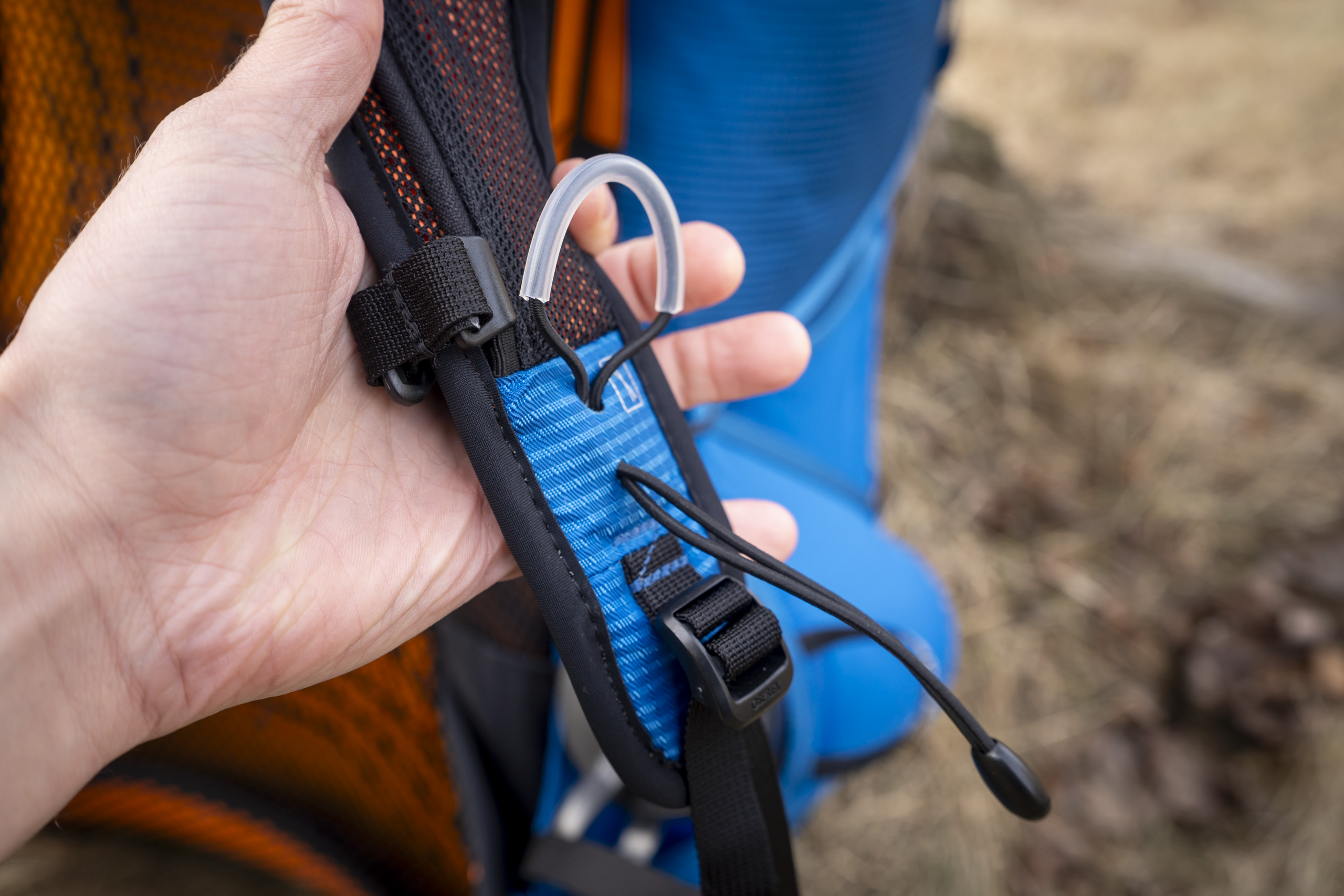
Durability
Utilizing 100D nylon for most of the bags construction and 400D for areas with reinforcement, the Exos is solidly in the middle when it comes to durability. Compared to beefier packs sporting thicker fabrics, the Exos won’t hold up as well to rough treatment, but it should last an entire thru hike with proper care. The weak points on this pack have historically been the fabric edges around the frame (which receive a lot of abrasion) and the mesh. Swapping to solid fabric for the hipbelt pockets will do a lot to reduce the mesh weak point, leaving the back and water bottle pockets as the only other places to use mesh.
Durability is partly helped by Osprey’s excellent lifetime warranty on all of their packs. They’ve been known to send new packs to thru hikers on long trails who experience wear and tear that hinders the usability of the packs. That’s part of Osprey’s popularity with backpackers. We also want to give a shout out to Osprey’s efforts towards sustainability here. The main body fabric is Bluesign-approved and made from recycled material. Also, the DWR treatment is PFC/PFAS free. We’d like to see improvements here to all Bluesign-approved fabric, but it’s still progress we want to commend.
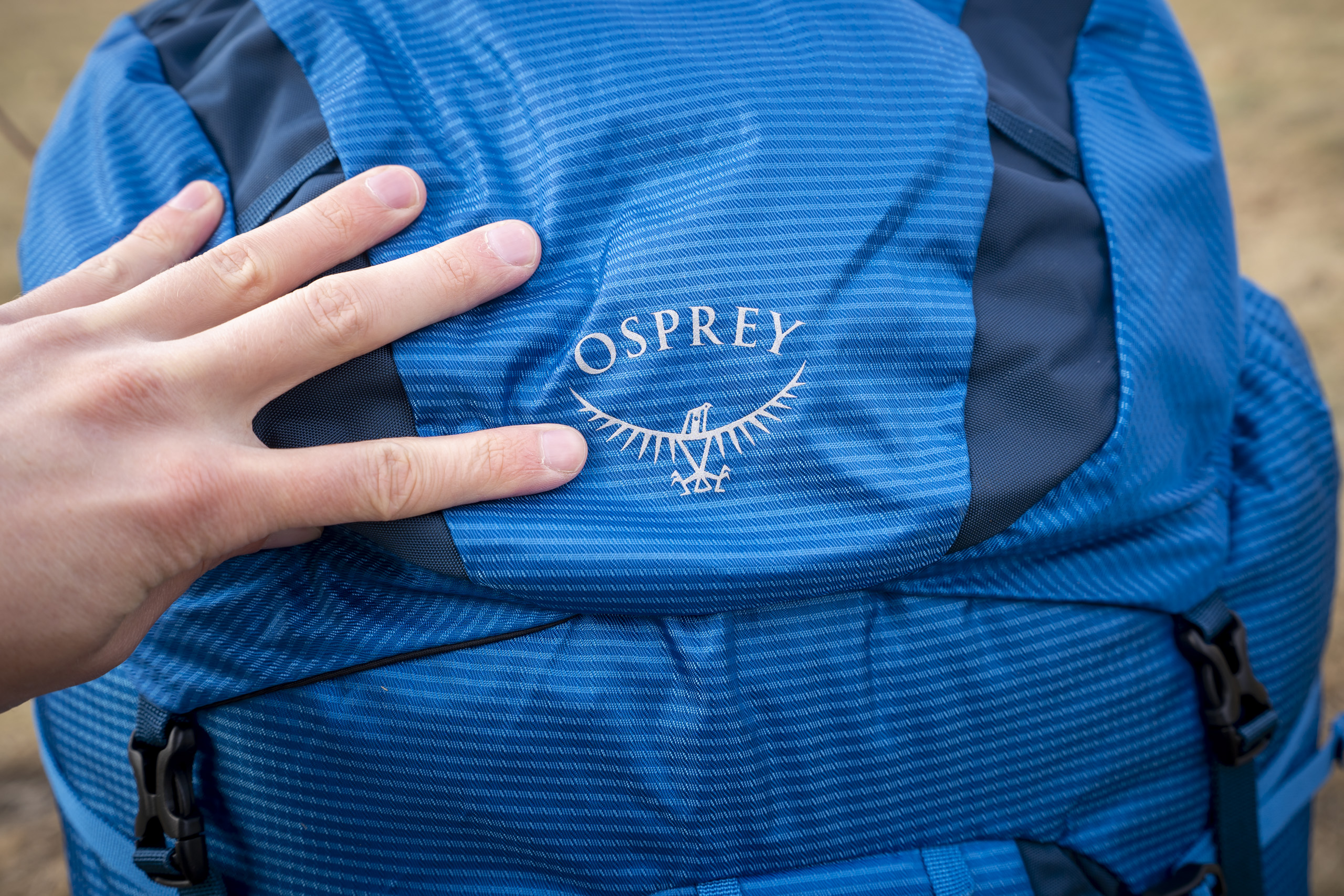
Ease of Use
The Exos follows Osprey’s traditional, trail-tested backpacking layout: a large top brain with inside and outside pockets covering a drawstring into the main compartment. The compression straps on the outside and a reverse pull hip belt cinch are easier to tighten than a standard buckle system. Everything works well here. It’s a system that hasn’t been changed much since the original Exos debuted.
What we like most is the ease of access to the water bottles and that great trekking pole attachment system. For people who prefer a drawstring to a roll-top opening, the Exos system is easy to use and fast. We also appreciate the large mesh back pocket, which is helpful for stashing our quick-access items. We frequently use this type of pocket for storing our puffy jacket on cold mornings after we warm up enough to take it off.
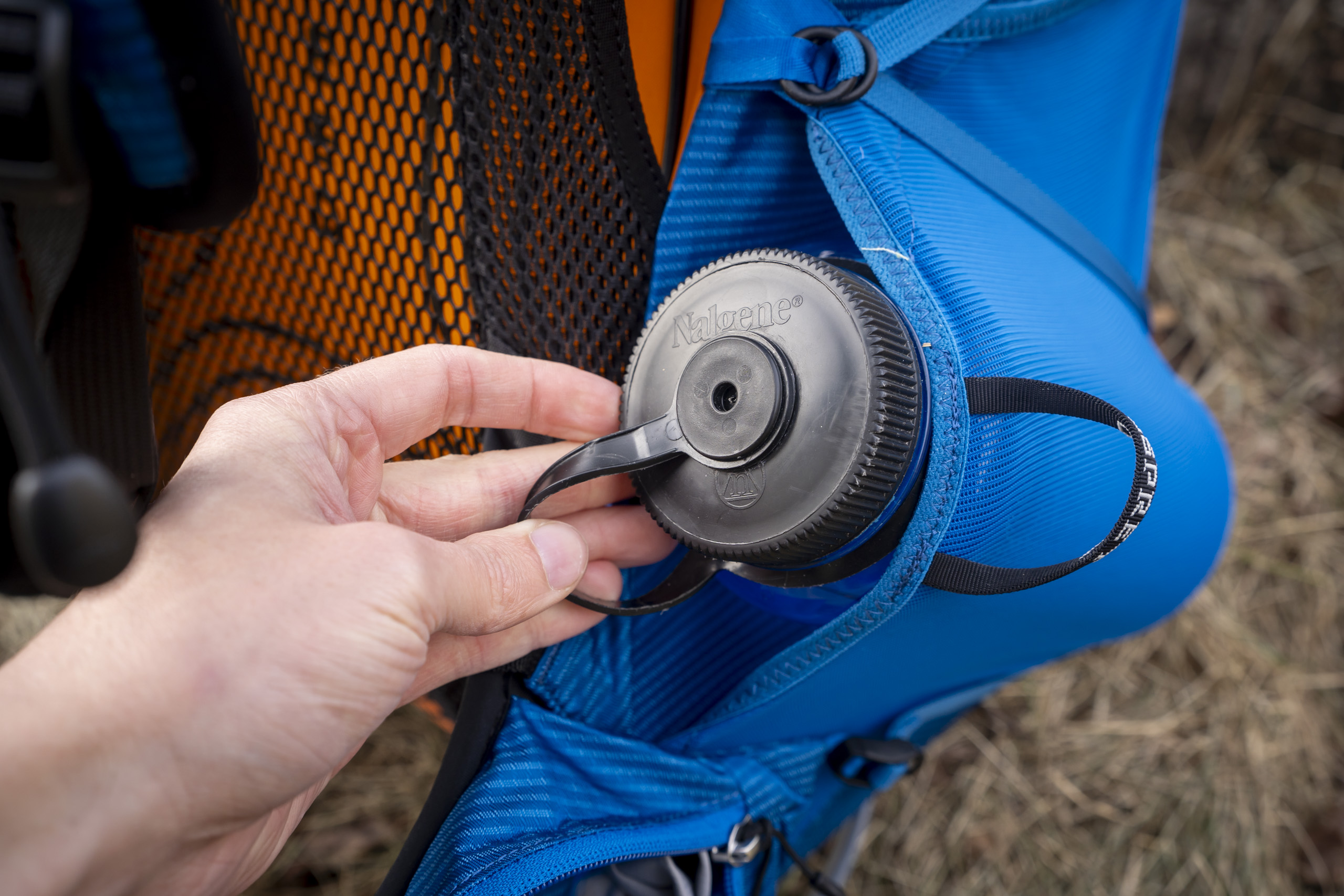
Should You Buy the Osprey Exos 58 Backpack?
For a pack with as broad popularity as the Exos, it’s clearly doing something right. This is a great pack for many people – one of those packs that manages to pull off being a jack of all trades in some ways. It’s lightweight enough to appeal to people concerned about weight but also feature rich to appeal to traditional backpackers as well. Osprey’s excellent construction and warranty sweeten the deal, and all that’s left is the reasonable price to make things even better. This is not a budget backpack, but it’s also not as expensive as a more traditional pack, falling just about average in the overall category.
If you’re a thru hiker not ready to make the leap to an ultralight pack but still want something reasonably lightweight, this is a good choice. Despite the domination of ultralight packs on long thru hiking trails, there’s a reason the Exos still ranks up there in popularity. Additionally, weekend warriors will also love this pack for its thoughtful balance of features and weight that will make occasional adventures easier.
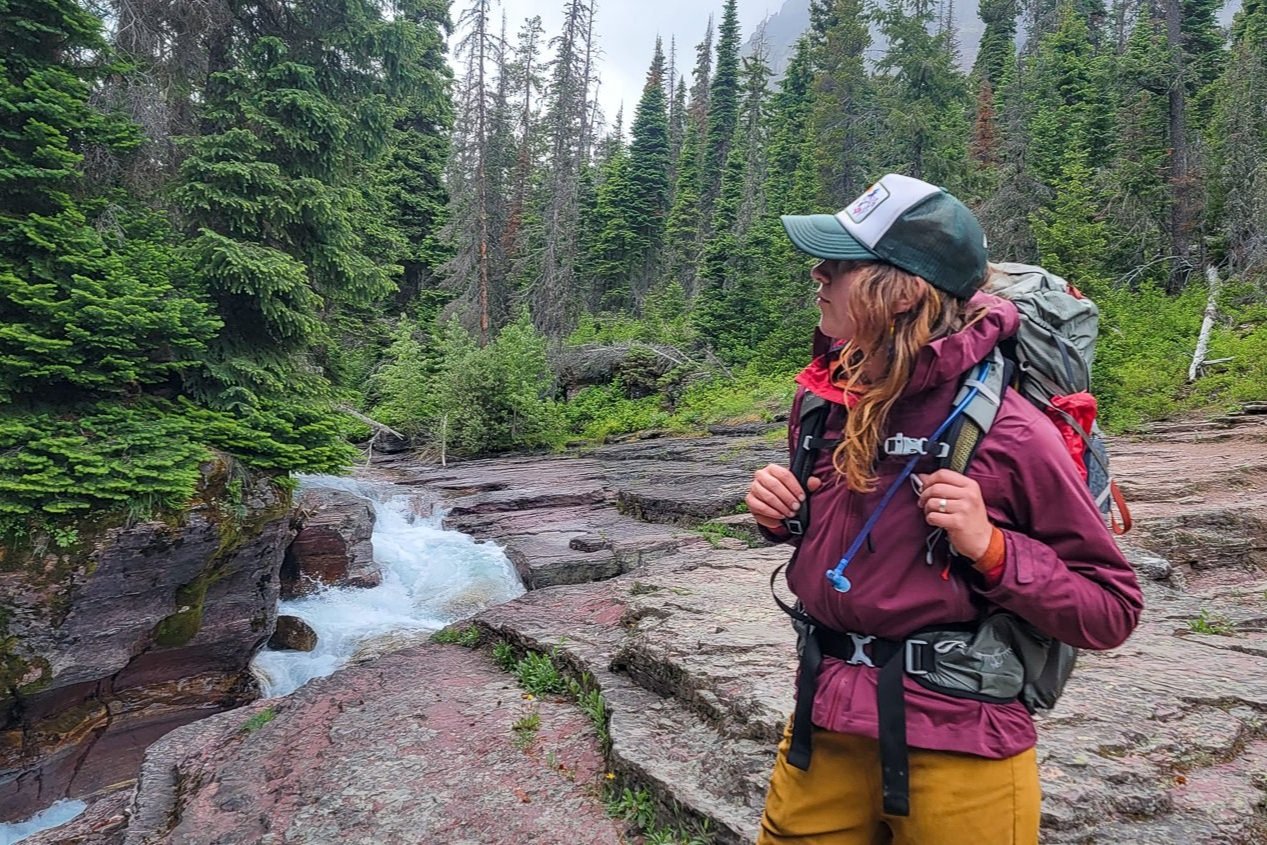
What Other Backpacking Packs Should You Consider?
Read our full guide to Backpacking Backpacks if you’re looking for something different from the Osprey Exos.
REI Flash 55 Review – For the same weight, the Flash manages to undercut the Exos significantly in price while delivering a largely comparable experience.
Gregory Paragon Review – For an increase in weight but not price, the Paragon offers a slightly more comfortable experience and a few more features that overall make us prefer it over the Exos.
ULA Circuit Review – The Exos is popular with thru hikers, but the ULA Circuit runs circles around it for thru-hiking purposes. Not only is it lighter, but it’s far more durable and can fit a horizontal BV500 internally with ease.
